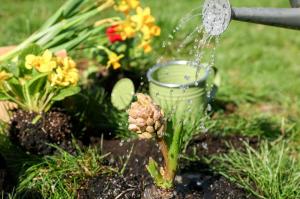Why Plant Trees in Urban Areas?
Urban areas, with their concrete jungles and towering skyscrapers, may not seem like ideal locations for planting trees. However, the benefits of urban trees to the environment, human health, and the community cannot be ignored. Here's why planting trees in urban areas is crucial:
Environmental Benefits
Urban trees can improve air quality by removing air pollutants and releasing oxygen. They can also reduce the urban heat island effect, where temperatures are significantly higher in urban areas due to the lack of vegetation and excess of heat-absorbing surfaces. Trees absorb heat from the atmosphere and provide shade, which can lower the temperature and reduce the air conditioning costs of buildings.
Moreover, trees help to mitigate the effects of climate change by sequestering carbon dioxide from the atmosphere. This can reduce the carbon footprint of cities and contribute to global efforts to combat climate change.
Health Benefits
Plants and trees have long been recognized for their ability to promote physical and mental health. Urban trees can help to reduce stress, anxiety, and depression by providing a sense of calmness and relaxation. They can also mitigate the impacts of noise pollution, which can cause hearing problems, sleep disturbances, and cardiovascular disease.
In addition, urban trees can enhance physical health by providing opportunities for physical activity such as walking, cycling, and jogging. They can also promote healthy eating habits by providing access to fresh fruits and vegetables in public gardens, and farmers markets.
Social Benefits
Trees can play a significant role in community building by creating public spaces that foster social interaction and a sense of community. They can provide shade and shelter for people to gather, play, and relax. Additionally, trees can contribute to the aesthetic appeal of urban areas by adding color, texture, and visual interest to otherwise mundane landscapes.
Trees also provide habitat and food for birds and other wildlife, which can enhance the biodiversity of urban ecosystems. They can help to create a sense of place and identity for cities, towns, and neighborhoods by serving as landmarks and symbols of local pride and values.
Challenges and Solutions
Although the benefits of urban trees are clear, planting and maintaining trees in urban areas can be challenging. Cities pose unique challenges to tree growth, including soil compaction, insufficient soil nutrients, and lack of water. Trees may also face hazards such as air pollution, pest infestations, and damage from vehicles and construction activities.
One solution to these challenges is to plant species that are adapted to urban environments and can thrive in adverse conditions. Trees that are drought-tolerant, pest-resistant, and have the ability to grow in compacted soils are ideal for urban areas. Another solution is to provide adequate care and maintenance for urban trees, such as regular watering, fertilization, and pruning.
In Conclusion
Planting trees in urban areas is essential for creating healthy and sustainable urban ecosystems. Urban trees provide numerous benefits to the environment, human health, and the community, and can contribute to the overall well-being of cities and its residents. With proper planning, care, and maintenance, urban trees can thrive and provide a green oasis in the midst of the concrete jungle.

 how many times do yo...
how many times do yo... how many planted tre...
how many planted tre... how many pine trees ...
how many pine trees ... how many pecan trees...
how many pecan trees... how many plants comp...
how many plants comp... how many plants can ...
how many plants can ... how many plants and ...
how many plants and ... how many pepper plan...
how many pepper plan...































